Gödel, Escher, Bach: An Eternal Golden Braid
Douglas R. Hofstadter
Twenty years after it topped the bestseller charts, Douglas R. Hofstadter's Gödel, Escher, Bach: An Eternal Golden Braidis still something of a marvel. Besides being a profound and entertaining meditation on human thought and creativity, this book looks at the surprising points of contact between the music of Bach, the artwork of Escher, and the mathematics of Gödel. It also looks at the prospects for computers and artificial intelligence (AI) for mimicking human thought. For the general reader and the computer techie alike, this book still sets a standard for thinking about the future of computers and their relation to the way we think.
Hofstadter's great achievement in Gödel, Escher, Bachwas making abstruse mathematical topics (like undecidability, recursion, and 'strange loops') accessible and remarkably entertaining. Borrowing a page from Lewis Carroll (who might well have been a fan of this book), each chapter presents dialogue between the Tortoise and Achilles, as well as other characters who dramatize concepts discussed later in more detail. Allusions to Bach's music (centering on his Musical Offering) and Escher's continually paradoxical artwork are plentiful here. This more approachable material lets the author delve into serious number theory (concentrating on the ramifications of Gödel's Theorem of Incompleteness) while stopping along the way to ponder the work of a host of other mathematicians, artists, and thinkers.
The world has moved on since 1979, of course. The book predicted that computers probably won't ever beat humans in chess, though Deep Blue beat Garry Kasparov in 1997. And the vinyl record, which serves for some of Hofstadter's best analogies, is now left to collectors. Sections on recursion and the graphs of certain functions from physics look tantalizing, like the fractals of recent chaos theory. And AI has moved on, of course, with mixed results. Yet Gödel, Escher, Bachremains a remarkable achievement. Its intellectual range and ability to let us visualize difficult mathematical concepts help make it one of this century's best for anyone who's interested in computers and their potential for realintelligence. —Richard Dragan
Topics Covered: J.S. Bach, M.C. Escher, Kurt Gödel: biographical information and work, artificial intelligence (AI) history and theories, strange loops and tangled hierarchies, formal and informal systems, number theory, form in mathematics, figure and ground, consistency, completeness, Euclidean and non-Euclidean geometry, recursive structures, theories of meaning, propositional calculus, typographical number theory, Zen and mathematics, levels of description and computers; theory of mind: neurons, minds and thoughts; undecidability; self-reference and self-representation; Turing test for machine intelligence.
0465026567
The Java(TM) Programming Language (3rd Edition)
Ken Arnold James Gosling David Holmes
Written by several of Java's inventors, The Java Programming Language, Third Editionprovides a nearly indispensable guide to basic and advanced features in today's hottest programming language. Perfect for the intermediate or advanced developer, this book delivers a wealth of information on how to do more with Java. The first sections provide a nicely compact tour of Java basics. If you're a beginner, you'll get a glimpse of the fundamentals of Java quickly. (Most of this new edition has the more experienced reader in mind.) Subsequent chapters delve into basic and advanced language features of what can be done with classes, interfaces, and other design features in Java. The authors' explanations are notably clear and never pedantic. Many examples are illustrated by using simple mathematical problems, and the class-design samples for inheritance and interfaces all use comprehensible class names and concepts.
This title is outstanding when it comes to class design. It will definitely let any reader do more with classes, whether you want to make use of such features as "anonymous inner classes" and reflection (for loading classes dynamically), or do more with interfaces (including extending interfaces and tricks on changing data members in interfaces).
Prominent sections here include a complete guide to Java language statements, including keywords, literals, and support for Unicode. Later sections feature a nice, clear explanation of Java's complicated I/O classes, a fine tutorial on threading, and a solid introduction to using Java's collection classes. The book closes with a tour of some additional "core" Java packages that are available in the language.
In all, this up-to-the-minute guide to some of the more complex features in today's Java fills a valuable niche for any Java developer. Besides providing a glimpse into what the Java team at Sun is up to, this authoritative resource can help you master the finer points of class design, as well as make the most out of newly added features in the new JDK 1.3 standard. —Richard Dragan
Topics covered:QuickStart overview of Java, class and object design in Java, access control, construction and initialization, static methods, method overloading, class inheritance, redefining members, the protectedkeyword, the strictfpkeyword and floating-point processing, cloning objects, interfaces (constants, methods, and modifiers), extending interfaces, marker interfaces, nested classes and interfaces (including static nested types, inner classes, and anonymous inner classes), tokens, operators, and expressions in Java, literals, keywords, operator precedence, control flow, Java exception handling, exception classes, the Stringand StringBufferclasses, threads, synchronization APIs and techniques (scheduling, thread groups, and thread local storage), the wrapper classes for Number types, Java reflection, loading classes, garbage collection (GC algorithms, finalization and reachability states), packages, JavaDoc documentation tags, tour of Java I/O stream classes, serialization techniques, new and legacy Java collections, miscellaneous utility classes, system programming with properties, processes and JVM shutdown; internationalization and localization techniques, and tour of additional Java "core" packages.
0201704331
Contextual Design : A Customer-Centered Approach to Systems Designs
Hugh Beyer Karen Holtzblatt
There's certainly no shortage of software design methods: most demand total allegiance, and many claim to be the only true way to delivering useful and maintainable software systems in a timely manner. Contextual Designdescribes another worthwhile software engineering method, one that places the user (or customer) at the forefront of the software design process from beginning to end. This method seems to be a particularly worthwhile addition to the literature.
Contextual Design begins with contextual inquiry, where software developers interview users and attempt to understand the way they work. Such "customer empathy" is central to the Contextual Design process and a total understanding of "work" within organizations is the mantra here. The book describes how, later in the process, software developers step back from the user data and do an "affinity," which is an overall analysis of hundreds (or even thousands) of individual facts. Contextual Designthen explains the additional steps required to build systems using this method, including building models for flow, sequence, and artifacts, and establishing the cultural and the physical environments for a system. After getting an overview, developers consolidate these initial models, get more user input, and then design user interfaces.
This book, written in a clear, informal style without excessive jargon, reads very much like a book on business motivation. Various practitioners of Contextual Design offer short testimonials on the software design method.
1558604111
|
Yesterday's Tomorrows: Past Visions of the American Future
Joseph J. Corn Brian Horrigan
Enormous skyscrapers will house residents and workers who happily go "for weeks" without setting foot on the ground. Streamlined, "hurricane-proof" houses will pivot on their foundations like weather vanes. The family car will turn into an airplane so easily that "a woman can do it in five minutes." Our wars will be fought by robots. And our living room furniture—waterproof, of course—will clean up with a squirt from the garden hose.
In Yesterday's Tomorrows Joseph J. Corn and Brian Horrigan explore the future as Americans earlier in the last century expected it to happen. Filled with vivid color images and lively text, the book is eloquent testimony to the confidence—and, at times, the naive faith—Americans have had in science and technology. The future that emerges here, the authors conclude, is one in which technology changes, but society and politics usually do not.
The authors draw on a wide variety of sources—popular-science magazines, science fiction, world fair exhibits, films, advertisements, and plans for things only dreamed of. From Jules Verne to the Jetsons, from a 500-passenger flying wing to an anti-aircraft flying buzz-saw, the vision of the future as seen through the eyes of the past demonstrates the play of the American imagination on the canvas of the future.
0801853990
Hog Ties: What Pigs Tell Us about America
Richard P. Horwitz
From Charlotte's Web to Porky Pig and Babe, Americans betray a curiously deep regard for pigs. Hog Ties looks at this phenomenon, its relation to American culture, and the way in which themes of life and death are played out in the care, feeding, slaughter, and eating of pigs. Intermingling silly asides with serious subjects, existential concerns with environmental issues, the book considers the ways that pigs might help Americans address powerful human concerns.
"An eccentric song of praise to all things porcine, a compendium of information on transmissible gastroenteritis, and a showcase for Horwitz's beguiling essayistic style." Times Literary Supplement (London)
"This book provides pleasant surprises on many levels. . . .Hog Ties is a thoughtful, worthwhile examination of a major part of the American food industry and of a way of life." Seattle Times
Richard P. Horwitz is professor and graduate director of American studies at the University of Iowa as well as senior fellow of the Coastal Institute in Narragansett, Rhode Island. Since 1978 he has moonlighted as a hired hand on a two-thousand-acre hog/cattle/grain farm.
0816641838
Confederates in the Attic: Dispatches from the Unfinished Civil War
Tony Horwitz
When prize-winning war correspondent Tony Horwitz leaves the battlefields of Bosnia and the Middle East for a peaceful corner of the Blue Ridge Mountains, he thinks he's put war zones behind him. But awakened one morning by the crackle of musket fire, Horwitz starts filing front-line dispatches again this time from a war close to home, and to his own heart.
Propelled by his boyhood passion for the Civil War, Horwitz embarks on a search for places and people still held in thrall by America's greatest conflict. The result is an adventure into the soul of the unvanquished South, where the ghosts of the Lost Cause are resurrected through ritual and remembrance.
In Virginia, Horwitz joins a band of 'hardcore' reenactors who crash-diet to achieve the hollow-eyed look of starved Confederates; in Kentucky, he witnesses Klan rallies and calls for race war sparked by the killing of a white man who brandishes a rebel flag; at Andersonville, he finds that the prison's commander, executed as a war criminal, is now exalted as a martyr and hero; and in the book's climax, Horwitz takes a marathon trek from Antietam to Gettysburg to Appomattox in the company of Robert Lee Hodge, an eccentric pilgrim who dubs their odyssey the 'Civil Wargasm.'
Written with Horwitz's signature blend of humor, history, and hard-nosed journalism, Confederates in the Attic brings alive old battlefields and new ones 'classrooms, courts, country bars' where the past and the present collide, often in explosive ways. Poignant and picaresque, haunting and hilarious, it speaks to anyone who has ever felt drawn to the mythic South and to the dark romance of the Civil War.
067975833X
American Visions : The Epic History of Art in America
ROBERT HUGHES
Australian-born art critic Robert Hughes, author of the highly acclaimed study of modern art, The Shock of the Newhas made his home in the United States for the last 20 years. His latest undertaking, which he calls "a love letter to America," is his most massive: a 350-year history of art in America. Published in association with an eight-part PBS series of the same name, this is no scholarly text. With the same voracious wit and opinionated brilliance that have characterized his criticism for Timemagazine, this tour-de-force spans three centuries of events, movements, and personalities that have shaped American society and its art. The reproductions are outstanding; 323 out of 365 are in rich, vivid color. Infinitely entertaining and perceptive, this superb book makes readers feel as if they have discovered a truer, hidden America. It seems certain to become one of the most important works in the art-historical canon.
0679426272
|
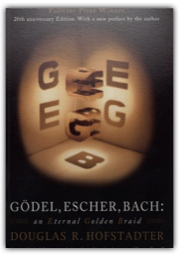
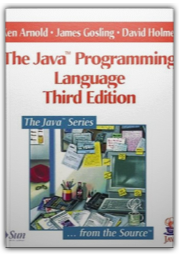
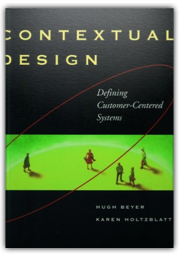
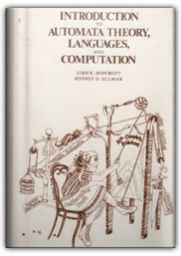
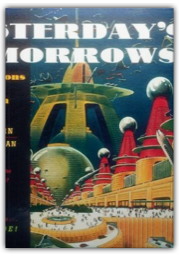

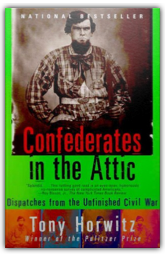


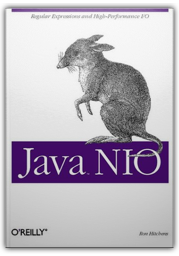


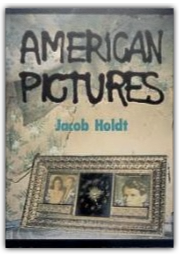
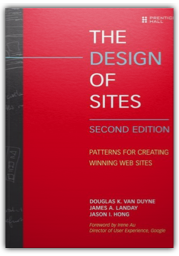
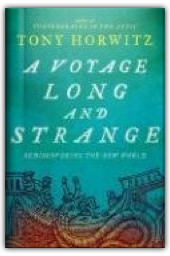

 Made with Delicious Library
Made with Delicious Library